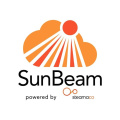Summary
Cut through the green tape
We don't push agendas. At Net Zero Compare, we cut through the hype and fear to deliver the straightforward facts you need for making informed decisions on green products and services. Whether motivated by compliance, customer demands, or a real passion for the environment, you’re welcome here. We provide reliable information—why you seek it is not our concern.
Details
Deep dive
What is a digital twin?
A digital twin is a virtual replica of a physical asset, system, or process, designed to simulate, monitor, and predict real-world operations. It integrates real-time data from sensors and advanced simulations to provide an accurate, dynamic representation of the asset's current condition and behaviour. This allows for predictive maintenance, performance optimization, and risk management. In industries like energy and infrastructure, digital twins are used to improve efficiency, extend asset lifespans, and prevent costly failures by forecasting future issues before they occur.

Service Overview
Akselos' digital twin technology is a cutting-edge solution that creates highly detailed virtual replicas of physical assets, such as offshore platforms, wind farms, and other critical infrastructure.
Key aspects
Core Technology:
Akselos uses reduced basis finite element analysis (RB-FEA), a simulation method that allows for faster, more efficient modelling of large structures with greater precision than traditional methods. Developed through research at MIT and funded by the US Department of Defense, this technology is significantly more advanced than traditional Finite Element Analysis (FEA).Performance:
RB-FEA is up to 1,000 times faster and 10 times more accurate than industry-standard methods when modelling large-scale assets. This allows for real-time, high-fidelity 3D simulations of complex structures.Applications:
Akselos' digital twins are used across various industries, including offshore wind, oil and gas, and power generation. They're particularly useful for monitoring and managing critical infrastructure.Asset Management:
The technology enables real-time monitoring of asset integrity, allowing operators to analyze operational performance and make adjustments accordingly. This is crucial for predictive maintenance and extending asset lifespan.Design Optimization:
Engineers can use Akselos' digital twins to explore thousands of design alternatives quickly, optimizing engineering designs without physical risk.Structural Performance Management (SPM):
Akselos' SPM software is used to monitor and manage vital assets in real time, improving lifecycle performance and reducing maintenance costs.Integration:
The digital twins can be integrated with other systems, such as hull monitoring systems for offshore platforms, enhancing overall asset integrity management
Partnerships
Akselos has formed strategic partnerships with major energy companies, including Shell, to apply its digital twin technology to manage large, complex infrastructure portfolios. Shell uses Akselos' digital twin simulations to optimize and monitor its oil and gas operations, ensuring real-time visibility into asset conditions and operational efficiency. This collaboration has played a key role in improving the safety, lifespan, and productivity of Shell’s assets in challenging environments.
Akselos, along with Yinson Production, and Enauta have partnered to deploy Akselos' digital twin technology on the Atlanta FPSO in Brazil's Santos Basin. The technology will provide real-time structural health monitoring, integrating with the FPSO's hull monitoring system to enhance safety and asset integrity. Akselos' simulation is significantly faster than traditional methods, providing detailed insights to optimize lifecycle management.
Sustainability
Akselos' digital twin technology is making significant strides in reducing carbon emissions and optimizing asset performance across various industries, particularly in the energy and infrastructure sectors. This innovative approach combines advanced physics-based simulations with real-time data to create highly accurate digital representations of large-scale assets.
At the core of Akselos' impact is its ability to improve asset design and extend operational lifespans. The technology enables engineers to explore a wider range of design options, resulting in more efficient, material-lean structures that inherently have a smaller carbon footprint. Moreover, by providing real-time monitoring and predictive maintenance capabilities, these digital twins can significantly extend the life of existing assets, in some cases by 20-50% or 14-35 years. This extension reduces the need for premature replacements and the associated carbon emissions from manufacturing new equipment.
Operational efficiency is another key area where Akselos' technology shines. The digital twins allow for continuous monitoring of asset integrity, enabling operators to analyze and adjust performance in real time. This leads to more efficient operations and reduced energy waste. Additionally, the technology can reduce inspection scopes by 30-40% compared to traditional methods, decreasing the need for carbon-intensive "drain-downs" of assets and increasing uptime while reducing operational expenses by 10-20%.In the realm of renewable energy, Akselos' digital twins are playing a crucial role. For instance, in hydroelectric power stations, the technology helps simulate different exploitation cycles, supporting the transition to renewable energy grid stabilization. This capability is increasingly important as the world moves towards cleaner energy sources.
By enabling condition-based monitoring and predictive maintenance, Akselos' technology helps prevent unexpected failures and reduces unnecessary downtime. This ensures that assets operate at peak efficiency, further contributing to carbon emission reductions. The company's Structural Performance Management (SPM) software improves the lifecycle performance of assets over time, potentially increasing energy production by up to 16% in some cases.
Sources: gihub.org, insight.enechange.com, digitaltwininsider.com, akselos.com






